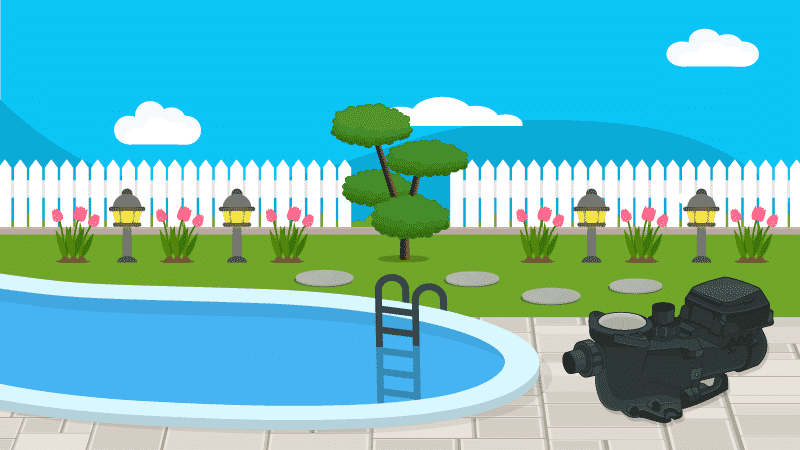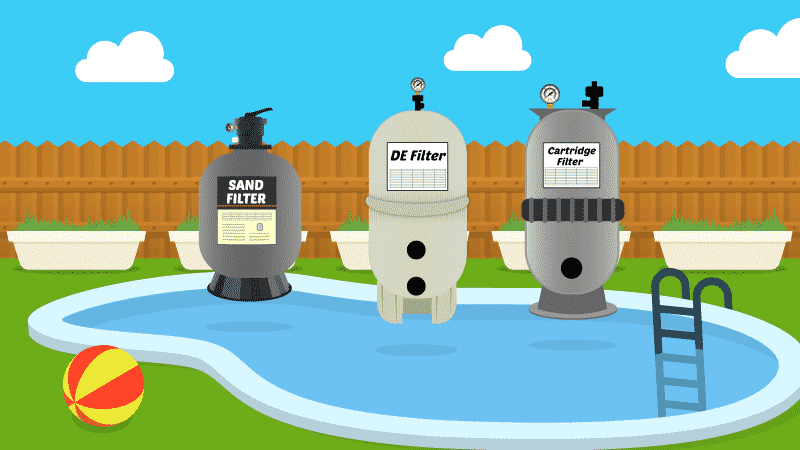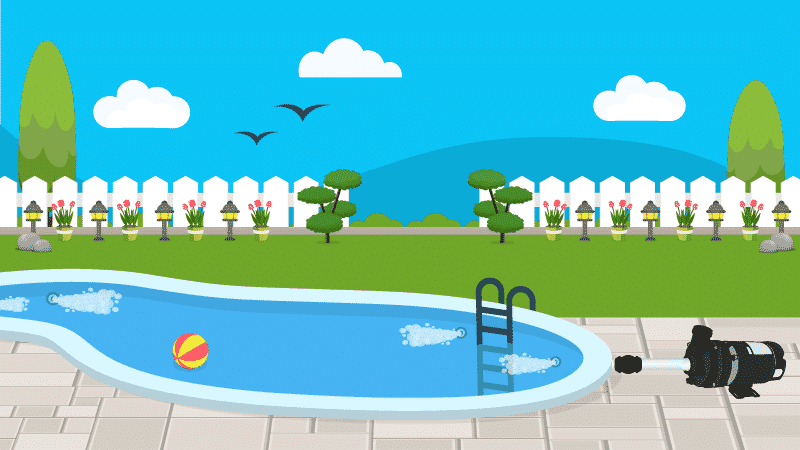D.E. Filter: How Does It Work and Is It Better Than A Sand Filter?
Pool filters are one of the most essential pieces of pool equipment. But there are multiple types to choose from and it can be hard to know which one is the best pool filter for your situation. One of the most powerful types of filters? The diatomaceous earth filter, or D.E. filter.
But buying a D.E. filter for your pool isn’t that simple. You’ll have to take into consideration what kind of pool you have, what size and type of filter you’ll need, and whether you’re up for the cleaning and maintenance that a D.E. filter requires.
That said, if you are in the market for this powerful pool filter, we recommend the Hayward ProGrid D.E. Filter for inground pools and the Hayward Perflex D.E. Filter for above ground pools.
This vertical grid filter works for inground pools of all types and sizes. Its plumbing options allow for customized control and less resistance to flow for maximum performance.
Built for above ground pools, this D.E. filter provides powerful filtration at an economical price. Its Flex-Tube system reuses D.E. powder to keep the filter running cleanly.
Wondering whether a D.E. filter is worth it for your pool? Keep reading for a complete guide on how these filters work and what to look for when buying the best D.E. filter for your swimming pool.
How Does a D.E. Filter Work?
A D.E. filter uses diatomaceous earth as the filter media. What is diatomaceous earth? It’s the fossilized remains of diatoms, a kind of aquatic creature with a skeleton high in silica. D.E. powder is sold at most pool and hardware retailers, so it’s easy to find – and it’s affordable, too.
When D.E. powder is added to the filter, it attaches to the grid or fingers inside the filter, creating a D.E. “cake.” And this cake, along with the filter grids inside, helps filter out fine particles in your pool water. This makes a D.E. filter the most powerful filtration system, compared to sand or cartridge filters.
Over time, the filter element will get dirty and contaminants will build up in the D.E. powder. And unfortunately, cleaning a D.E. filter requires multiple steps compared to other types.
To clean a D.E. filter, you’ll need to remove the D.E. grid and spray it down with a garden hose or soak it in muriatic acid to remove oil, minerals, and dirt.
You’ll also need to regularly backwash the D.E. filter to help remove the buildup that’s accumulated inside. That means reversing the flow of water inside the filter, which loosens the collected dirt and debris to leave the tank. That water is then sent out of your pool using the filter’s waste port.
Finally, when you’re replacing your grids or backwashing the filter, you’ll need to add more D.E. powder. This is added directly through the skimmer line where it then travels into your filter.
Filter media for backwashing and cleaning D.E. pool filters.
D.E. FIlters vs. Sand Filters: Which One is Better?
Both D.E. filters and sand filters use powder or sand to capture particles to clean your water. And whether you use a D.E. or sand filter system, you’ll need to backwash each one regularly to help remove the dirt, debris, and dirty water.
But when compared to a sand filter, D.E. filters provide much better filtration of smaller contaminants. A sand filter will filter particles ranging from 20 to 40 microns in size, whereas a D.E. filter can handle particles as small as 1 to 6 microns. Things in your pool water like deodorant and other cosmetic products can be as small as 6 microns. And skin flakes can range from 0.5 to 10 microns. So while these might pass through a sand filter and end up back in your pool, they’ll be captured by a D.E. filter.
However, while a D.E. filter will take care of smaller particles, you can expect more maintenance, more cleaning, and a higher upfront cost.
While you’ll only need to backwash your sand filter for regular maintenance, a D.E. filter is more involved. D.E. filter grids require cleaning, which means taking apart the filter and spraying down your grids with water or soaking them in muriatic acid. And after each filter backwash, you’ll need to add more D.E. powder.
Finally, sand filters are one of the most common types of pool filters. That also means the initial investment is much more affordable than a D.E. filter. However, you’ll need to replace the sand or D.E. powder in both types of filters every 4 to 5 years.
Overall, D.E. filters are more powerful than sand filters, giving your cleaner pool water. But remember that D.E. filters require more maintenance and ongoing work and tend to be more expensive.
Stop wasting time and money with confusing water chemistry and maintenance. Our effortless system guarantees to keep your pool balanced, sanitized, and crystal clear all year. Works for all pools including saltwater.
Our Top Picks for The Best D.E. Filters
The right D.E. filter for your pool is based on your swimming pool’s surface area and whether you have an inground or above ground pool. With that in mind, here are our recommendations for the best D.E. filters.
Best for Inground Pools: Hayward ProGrid D.E. Filter
This vertical grid filter works for inground pools of all types and sizes. Its plumbing options allow for customized control and less resistance to flow for maximum performance.
Available in sizes from 36 sq ft to 60 sq ft, the Hayward ProGrid D.E. filter uses a vertical grid. Designed for use with inground pools of all sizes, it features a glass-reinforced copolymer to make it corrosion-resistant. It offers up-flow filtration and top-down backwashing for easy maintenance. And the easy access one-piece flange clamp assembly makes service and maintenance simple.
Finally, it comes in different models to accommodate different pool sizes. The 36 sq. ft. model offers 72 gallons per minute (GPM), while the 48 sq. ft. model offers 96 GPM, and the 60 sq. ft. model offers 120 GPM.
Best for Above Ground Pools: Hayward Perflex D.E. Pool Filter
Built for above ground pools, this D.E. filter provides powerful filtration at an economical price. Its Flex-Tube system reuses D.E. powder to keep the filter running cleanly.
The Hayward Perflex D.E. Filter offers models from 20 sq. ft. to 40 sq. ft., making it a great option for smaller and above ground pools. The Perflex D.E. filter cleans particles as small as 2 microns and features a patented design to provide longer cycles between cleaning. It also features a “bump” mechanism that allows the tubes to clean themselves of dirt and filter media.
Best Alternative: Pentair Quad D.E. Cartridge Style Filter
With four large capacity cartridges, this filter provides maximum filter surface area for greater dirt-trapping capacity and longer periods between cleanings. And its easily removable cartridge elements make maintenance fast and easy.
This cartridge-style D.E. filter features four large capacity cartridges to maximize filter surface area. This means you can capture more dirt and debris and go longer between cleanings. The 60 sq. ft. model offers a 120 GPM rate with a 172,800 gallon turnover in 24 hours. And the tank is made with fiberglass-reinforced polypropylene to last a long time.
When it’s time to clean, the cartridge elements are easy to remove, so you can spend less time on maintenance. And because of efficient water flow, your water pump will use less energy.
How to Choose the Best D.E. Filter
Here are a few things to consider when shopping for a D.E. Filter.
Type of Pool
D.E. filters work with any type of pool, including saltwater pools. But if you have an above ground pool, be sure to look for a D.E. filter model that’s able to hook up to your system. And keep in mind you might not necessarily need to invest in a D.E. filter if you have a smaller pool. Sand filters and cartridge filters are a more budget-friendly option and usually provide adequate filtration in pools with smaller surface areas.
Filter Size
Without the right sized filter and pump, your pool either won’t be cleaned enough or you’ll be wasting energy and unnecessarily shortening the lifespan of your filter.
The right size filter will turnover all of your pool water at least once a day, you’re. And to completely clean your pool water, you’ll want to turn it over three times in 24 hours. That means if you have a 15,000-gallon pool (a full turnover) you need a filter that can handle 45,000 gallons every day.
If you need help calculating your turnover rate and filter flow rate based on your pool size, be sure to check out our guide on How Long Should I Run My Pool Pump Every Day?
And be sure to consult your filter’s specs to make sure you’re meeting or slightly exceeding the gallons per minute required for your pool.
Filter Valve Type
A D.E. filter comes with a valve to help with backwashing and maintenance. Some D.E. filters feature a push/pull valve, which is simpler to use. Others have a multiport valve with multiple modes to handle various functions.
Multiport valve options commonly include the following filter settings:
- Filter: Normal mode for filtering the water and returning it to your pool
- Backwash: Reverses the flow of water to clean the filter and sends the water out the waste line
- Rinse: Removes loose particles and sends them out through the waste line
- Waste: Sends dirty water out through a waste line
- Circulate: Bypasses the filter to circulate your pool the water
- Closed: Closes off any water coming into the filter
- Winterize: Shuts down and protects filter for the colder months
Push/pull valves, on the other hand, are much more simple and easy to use. When the filter is in use, the handle is down, and when backwashing, the handle is up. This means it’s less likely to break or malfunction than a multiport valve, but you miss out on other options like Rinse and Winterize.
Types of D.E. Filters
You’ll find grid D.E. filters and quad filters. And grid filters come with either panels or fingers. The panels are usually curved, made with polypropylene, and arranged in a circular pattern. These panels are layered on top of one another, enabling better filtration and water flow through the tank.
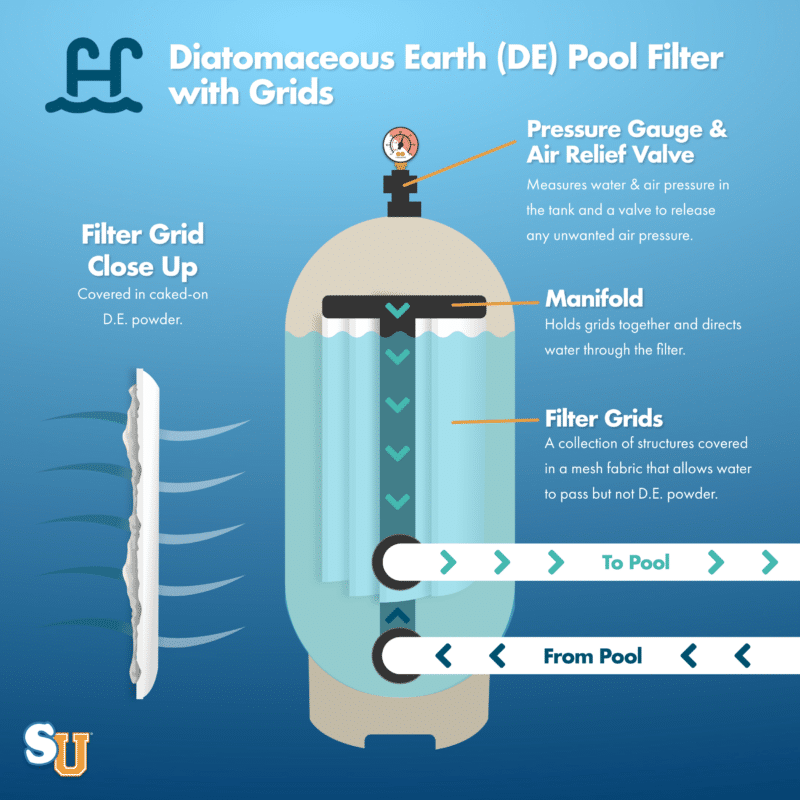
Finger systems, on the other hand, use a grid that looks like vertical fingers. They can house up to 100 filters arranged in a concentric circle. This configuration gives you a more balanced water flow in the tank, during filtering and backwashing, so you have a higher flow rate and lower filter pressure.
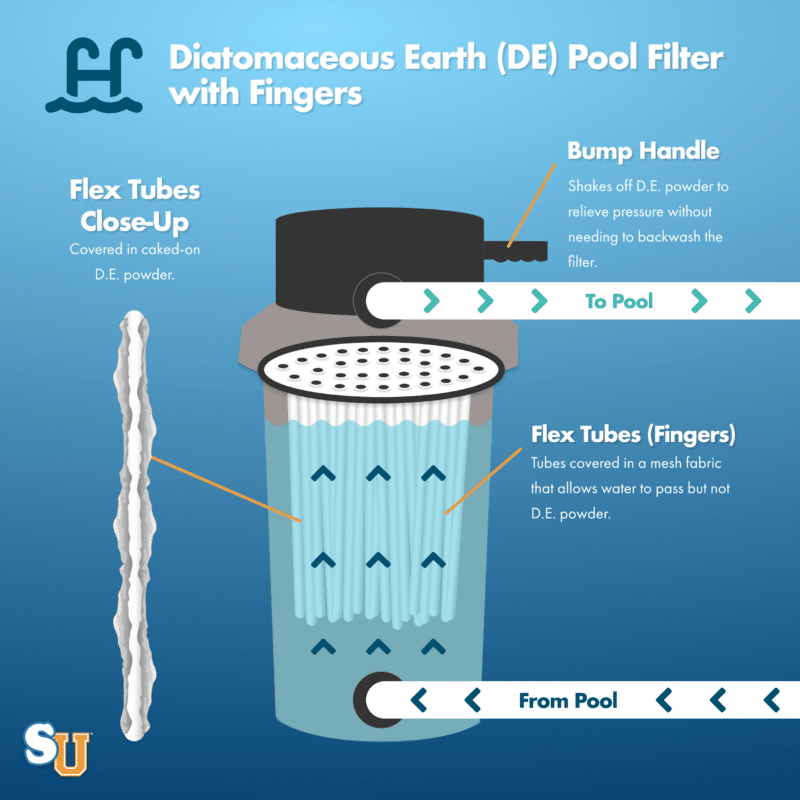
Compared to finger systems, the grid design makes the filter system easy to clean. You do not need to remove them from the tank to clean or backwash.
Finally, there are Quad D.E. Filters. These look more like cartridge filters. Four cylindrical grids are made with thick woven polyester and offer an increased water flow rate and longer filter cycles.
Cleaning Requirements
One of the drawbacks of a D.E. filter is that it requires more effort to clean. But you don’t have to backwash it as often as you would a sand filter. And once you have done it a few times, it’s a simple thing to add to your regular pool maintenance routine.
Depending on the kind of filter you use, you may need to completely remove the grid from the tank to hose it down or soak it in muriatic acid.
Installation Requirements
Installing a D.E. filter isn’t all that difficult. After the grids are in place, hook the filter up to the plumbing and the multiport valve.
Keep in mind that filters won’t always provide adequate fittings for connecting everything. So it’s a good idea to make sure you have all the pieces to connect your filter to your existing pool equipment.
After that, mix your D.E. powder with water (according to your filter’s directions) and pour it into your skimmer with the pump running. It will be sent through the pool system. As it moves through, the D.E. sticks to the filter grid to create a D.E. “cake” that helps filter your pool water.
Filter Tank Construction
You can find pool filter tanks made with metal or high-quality plastic, such as ABS thermoplastic. A plastic tank is corrosion-resistant, which is crucial since it will be constantly subjected to water.
You’ll also need to consider tank size. Some models are large and round. Some are tall and slim. This of course relates to how large the tank must be to accommodate your pool, but it is also important if your space is limited.
Frequently Asked Questions About D.E. Filters
Looking for more help with D.E. filters? Here are some commonly asked questions and answers.
What does D.E. stand for in D.E. Filter?
D.E. stands for diatomaceous earth. It’s the fossilized remains of diatoms, aquatic creatures. It’s often found in river beds and the ocean.
How much does a new D.E. filter cost?
On average, the cost of a D.E. filter ranges from $500 to $2,000, depending on the size and complexity of the system. It is the most efficient filtration system, resulting in cleaner water, which helps prolong the life of your pool equipment.
Are D.E. filters better?
D.E. filters offer better filtration, but they aren’t the cheapest to buy and they require more effort to clear. If you’re worried about your budget, then a sand or cartridge filter will be better. If you want the cleanest water, then a D.E. filter is better.
Can I put D.E. in my sand filter?
Yes, you can put a small amount of D.E. powder into your sand filter after each backwash to help improve its filtration temporarily. But you assume some risk because sand filters are designed to be used with sand and it might void your filter warranty. And always start with a small amount, because too much will clog the system and possibly ruin it.
Which is better: a D.E. filter or a cartridge filter?
D.E. pool filters are better for filtering out small particles, but cartridge pool filters are easier to use. Which one is better depends on your budget and how much filtration you need.
3 Ways We Can Help With Your Pool
- Pool Care Cheat Sheets (Free): Easy-to-use downloadable guides to help you keep track of taking care of your pool this year.
- The Pool Care Handbook: An illustrated guide to DIY pool care, including water chemistry, maintenance, troubleshooting, and more.
- The Pool Care Video Course: You’ll get 30+ step-by-step videos and a downloadable guide with everything you need to know about pool maintenance.











